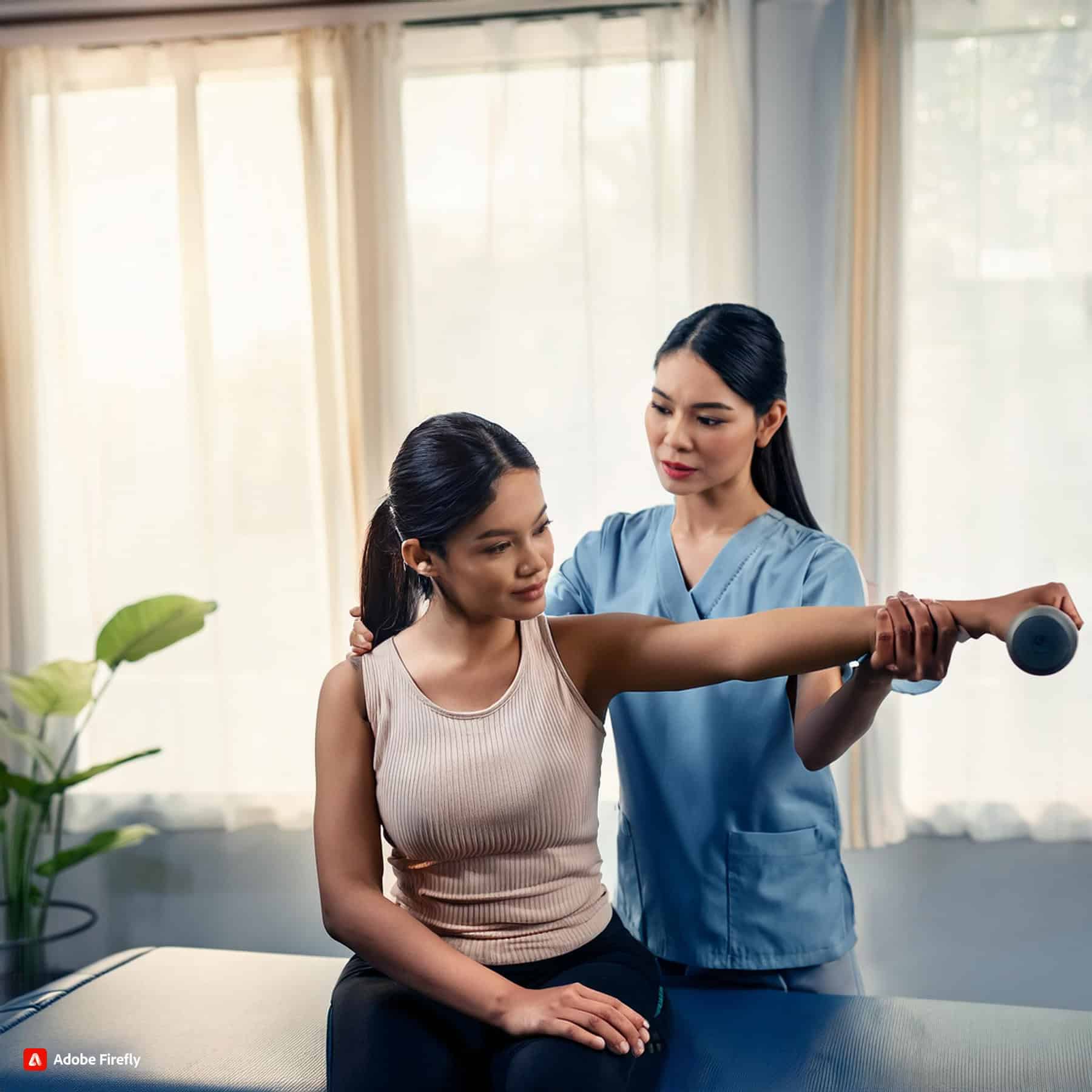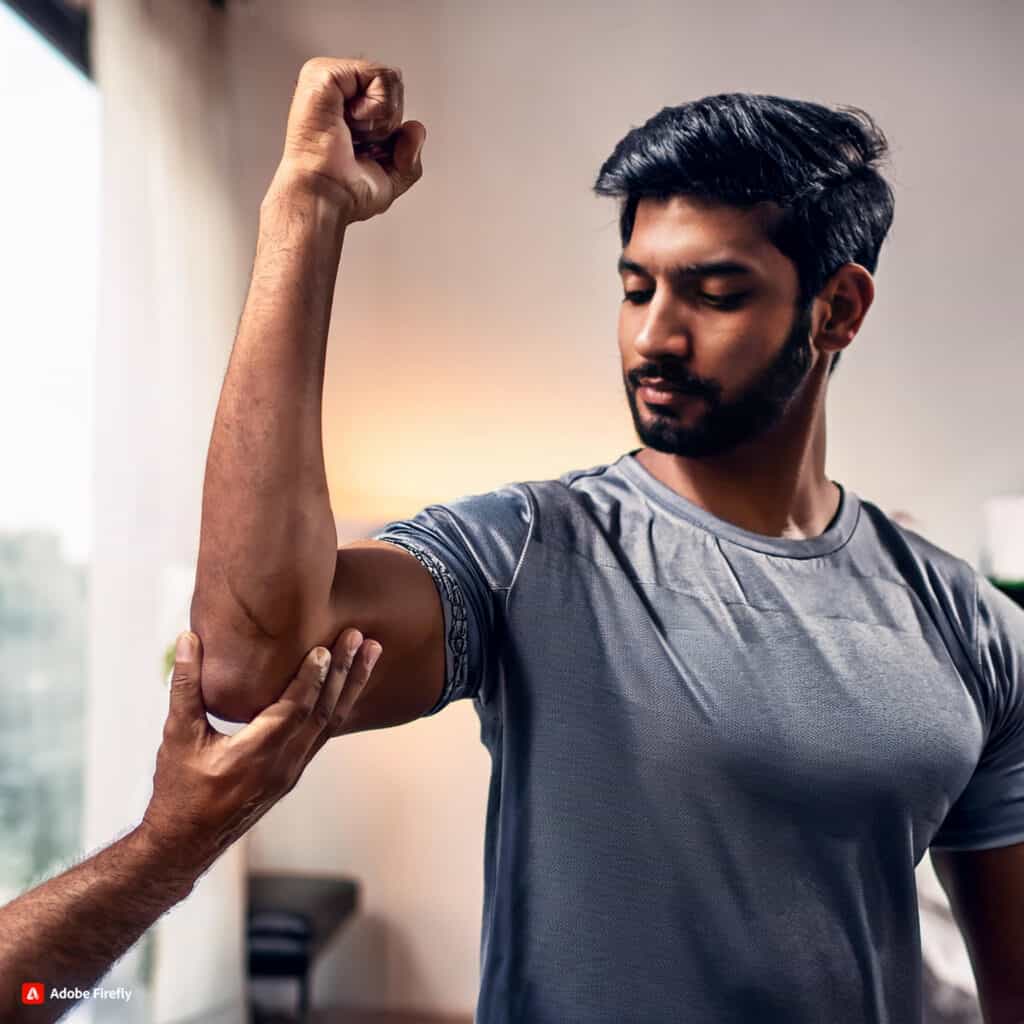Pilates and Managing Erb’s Palsy

What is Erb’s Palsy?
Erb’s Palsy or Brachial Plexus injury is a condition that often occurs due to excessive stretching or pulling of the infant’s neck during childbirth. This can lead to partial or complete paralysis of its arm as the brachial plexus nerves get damaged. And while for many, this could mean a significant impact to their mobility, function and overall quality of life, Moushu’s Pilates is here to assure you that it’s not all bad news. With the right approach to rehabilitation, individuals with Erb’s Palsy can put themselves on the path to recovery and leading more independent lives.
How Physiotherapy can help:
Physiotherapy aims to improve the strength, mobility, function, and overall quality of life for individuals affected by Erb’s Palsy and can therefore play a key role in managing the condition in the following ways:
- Assessment and Individualized Treatment Plan: First, a physiotherapist will conduct a thorough assessment to evaluate the extent of nerve damage, muscle weakness, and functional limitations of an individual afflicted with Erb’s Palsy. Based on the assessment, they will then develop a customised treatment plan, suited to each patient’s specific needs and goals.
- Range of Motion Exercises: A series of gentle stretching exercises are included to increase range of motion of the joints, promote better mobility, improve flexibility and prevent joint stiffness in the affected arm and shoulder.
- Strengthening Exercises: Some targeted exercises are included as well, designed to strengthen the muscles surrounding the affected shoulder, elbow, and wrist joints. By strengthening these muscles, individuals can perform daily activities more effectively due to their improved stability, control and overall functional strength.
- Neuromuscular Re-Education: Techniques such as proprioceptive training (Refer to blog on proprioception to know more: https://moushuspilates.com/unlocking-the-secrets-of-proprioception/) and mirror therapy are used to retrain the nervous system and improve coordination and control of movements.
- Manual Therapy: Manual therapy can help reduce muscle tension, improve joint mobility, and enhance overall comfort. This includes hands-on techniques such as massage, joint mobilization, and soft tissue mobilization that can be used to alleviate pain, improve circulation, and promote tissue healing.

The Power of Pilates:
While physiotherapy does help individuals afflicted with Erb’s Palsy, it’s just one side of the coin, while Pilates constitutes the other.
Pilates is increasingly being recognized as a valuable step towards rehabilitation for individuals with Erb’s Palsy, offering a holistic approach that targets strength, flexibility, coordination, body awareness & stress reduction. While it may not directly address nerve damage associated with Erb’s Palsy, it is still beneficial in several ways:
- Core Strengthening: Targeting deep abdominal muscles is a key part of Pilates exercises. This in turn provides stability and support for the entire body including the affected arm.
- Balanced Muscle Development: Pilates emphasizes balanced muscle development, helping to prevent compensation patterns and promote proper alignment and posture.
- Improved Range of Motion: Improved flexibility and range of motion of the shoulder, elbow, and wrist joints are all outcomes of practicing Pilates.
- Enhanced Body Awareness: Mindfulness and body awareness is also a encouraged by Pilates which can help individuals with Erb’s Palsy better understand their movement patterns and make necessary adjustments.
- Stress Reduction: Pilates incorporates breathing techniques and relaxation exercises that help reduce stress and promote overall well-being.
Physiotherapy and Pilates- The tools to managing Erb’s Palsy:
As individual exercise and rehabilitation forms, physiotherapy and Pilates are effective. However, when practiced together, they create a synergistic blend of strength and flexibility, resilience and grace.
Physiotherapy first lays the foundation by addressing specific impairments and functional limitations with targeted interventions. Pilates then builds upon this by refining movement patterns, enhancing body awareness, and promoting holistic well-being. When used in conjunction with one another, they can unlock the strength, flexibility, and vitality that empowers individuals to move with grace and confidence.
Although a long and laborious road to recovery, with enough dedication, perseverance and the support of healthcare professionals, individuals with Erb’s Palsy can optimize their recovery and maximize their potential for long-term success.
A Moushu’s Pilates Champion: Nishka
18-year-old Nishka’s journey in managing her Erb’s Palsy was an unusual one, because she stumbled upon Moushu’s Pilates as a solution quite by accident. Having heard how Pilates helped her mother feel more balanced, she decided to accompany her to our studio one day.
As with all our clients, we first conducted a thorough assessment so as to create a customised exercise plan, tailored to Nishka’s needs. However, upon subjecting her to a series of gentle movements we realised that her right shoulder was incapable of moving as freely as the left, thereby restricted in achieving its full potential. Some additional challenges we observed were her inability to completely straighten her right elbow, internal rotation, elevation of her right shoulder compared to her left and a noticeable lack of proper shoulder blade movement.
After inquiring about the same, her mother informed us that Nishka had been diagnosed with Brachial Plexus injury at birth. From 2009 to 2023 she’d undergone a number of treatments, beginning with conservative treatment that had resulted in shoulder deformity and weakness. Following this, she’d undergone surgeries- namely, on the front of her right shoulder (to release tension and improve range of motion), division of the subcapularis muscle, latissimus dorsi and teres major muscle groups (to release internal rotation of the shoulder and enhance movement and stability respectively), while preserving blood flow and nerve function. Lastly, she underwent 6 months of physiotherapy with continuous functional exercises to maintain her mobility.
When we began her treatment in 2023, we addressed her issues by introducing her to a series of targeted exercises such as scapular squeezes, serratus anterior activation, shoulder blade retractions and stability exercises- aimed at enhanced scapula setting and shoulder stability.
Nishka approached each exercise, challenging or otherwise, with admirable enthusiasm. As she progressed, her shoulder began to loosen up and she started gaining more control over her right arm. With her strength and confidence growing, we gradually began to introduce reformer exercises to her plan as well as a few that would not only increase her mobility but also help her enjoy Pilates more such as arm circles or chest expansion exercises with increasing resistance to enable constant improvement.
Over time, her undeniable progress meant we could set her a few exercises like isometric shoulder contractions and resistance band exercises to practice at home to keep her mobility up.
What initially began as just a trial in the world of Pilates, ultimately enabled a young girl to overcome a condition she’d struggled with all her life and offered true insight into herself, her own strength and resilience.
Now a regular at the studio, Nishka continues to inspire us all with her grit and determination, reminding us all that a transformative journey of self-improvement can begin as easily as asking “May I try that?”
Co-Author: Sameera Shaikh
A person for whom it took 4 years and a degree in Hospitality to figure out she was in the wrong industry. Sameera is now a seasoned marketer who works in Brand Communications, Strategy and Content while dabbling in freelance content, blog and creative writing.
 PILATES AND MANAGING ERB’S PALSY
YouTube Video VVVsVldKMnEtS1l0ZGJfZEpZT2NfRWhBLm9KWFlMNVpWVEZV
PILATES AND MANAGING ERB’S PALSY
YouTube Video VVVsVldKMnEtS1l0ZGJfZEpZT2NfRWhBLm9KWFlMNVpWVEZV
 Pilates for Hemiplegia
YouTube Video VVVsVldKMnEtS1l0ZGJfZEpZT2NfRWhBLlJUQWZfZlF4d2Vv
Pilates for Hemiplegia
YouTube Video VVVsVldKMnEtS1l0ZGJfZEpZT2NfRWhBLlJUQWZfZlF4d2Vv
 The Story Of Gait
YouTube Video VVVsVldKMnEtS1l0ZGJfZEpZT2NfRWhBLlFaMy0zUXRpVjA4
The Story Of Gait
YouTube Video VVVsVldKMnEtS1l0ZGJfZEpZT2NfRWhBLlFaMy0zUXRpVjA4
 Pilates & Balance
YouTube Video VVVsVldKMnEtS1l0ZGJfZEpZT2NfRWhBLjc1cDhEYXBXY25F
Pilates & Balance
YouTube Video VVVsVldKMnEtS1l0ZGJfZEpZT2NfRWhBLjc1cDhEYXBXY25F
 Propriocetive Exercises
YouTube Video VVVsVldKMnEtS1l0ZGJfZEpZT2NfRWhBLi04MFIwUVd5TDlv
Propriocetive Exercises
YouTube Video VVVsVldKMnEtS1l0ZGJfZEpZT2NfRWhBLi04MFIwUVd5TDlv
 Principles & Functions of the Fascia in Pilates
YouTube Video VVVsVldKMnEtS1l0ZGJfZEpZT2NfRWhBLndWQnNOLTUyY2kw
Principles & Functions of the Fascia in Pilates
YouTube Video VVVsVldKMnEtS1l0ZGJfZEpZT2NfRWhBLndWQnNOLTUyY2kw
 Motor Learning & Pilates
YouTube Video VVVsVldKMnEtS1l0ZGJfZEpZT2NfRWhBLmZUM2g3dFJtSDR3
Motor Learning & Pilates
YouTube Video VVVsVldKMnEtS1l0ZGJfZEpZT2NfRWhBLmZUM2g3dFJtSDR3
 The Fantastic Five – Strengthening Exercises
YouTube Video VVVsVldKMnEtS1l0ZGJfZEpZT2NfRWhBLjE3RF9UaWkzOEhJ
The Fantastic Five – Strengthening Exercises
YouTube Video VVVsVldKMnEtS1l0ZGJfZEpZT2NfRWhBLjE3RF9UaWkzOEhJ
 The Fantastic Five – Mobility Training
YouTube Video VVVsVldKMnEtS1l0ZGJfZEpZT2NfRWhBLkpUcHVQc2RDbVRB
Subscribe
The Fantastic Five – Mobility Training
YouTube Video VVVsVldKMnEtS1l0ZGJfZEpZT2NfRWhBLkpUcHVQc2RDbVRB
Subscribe
